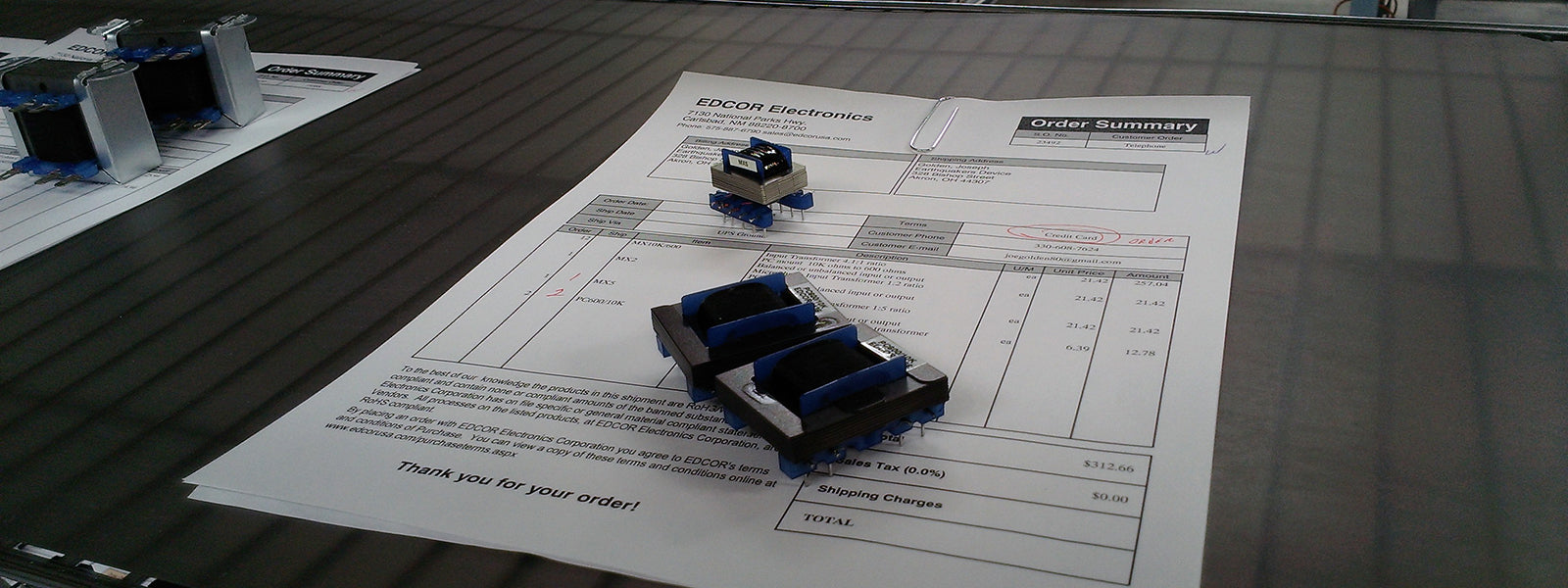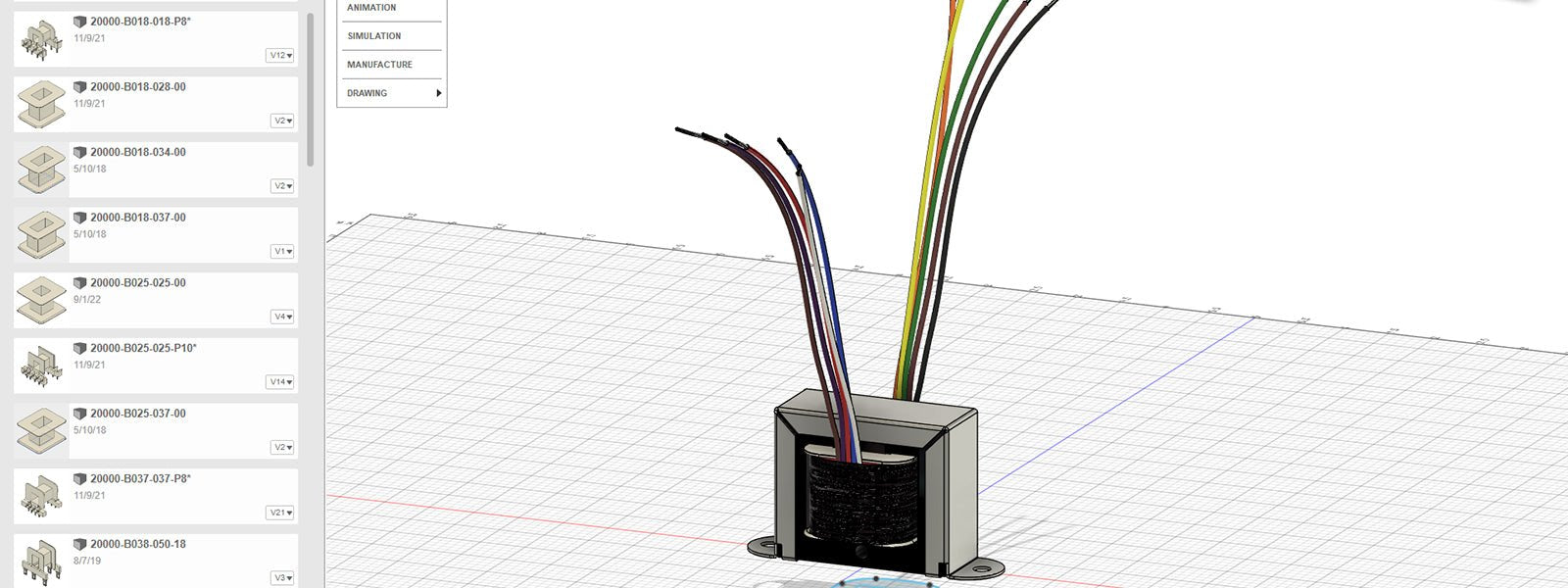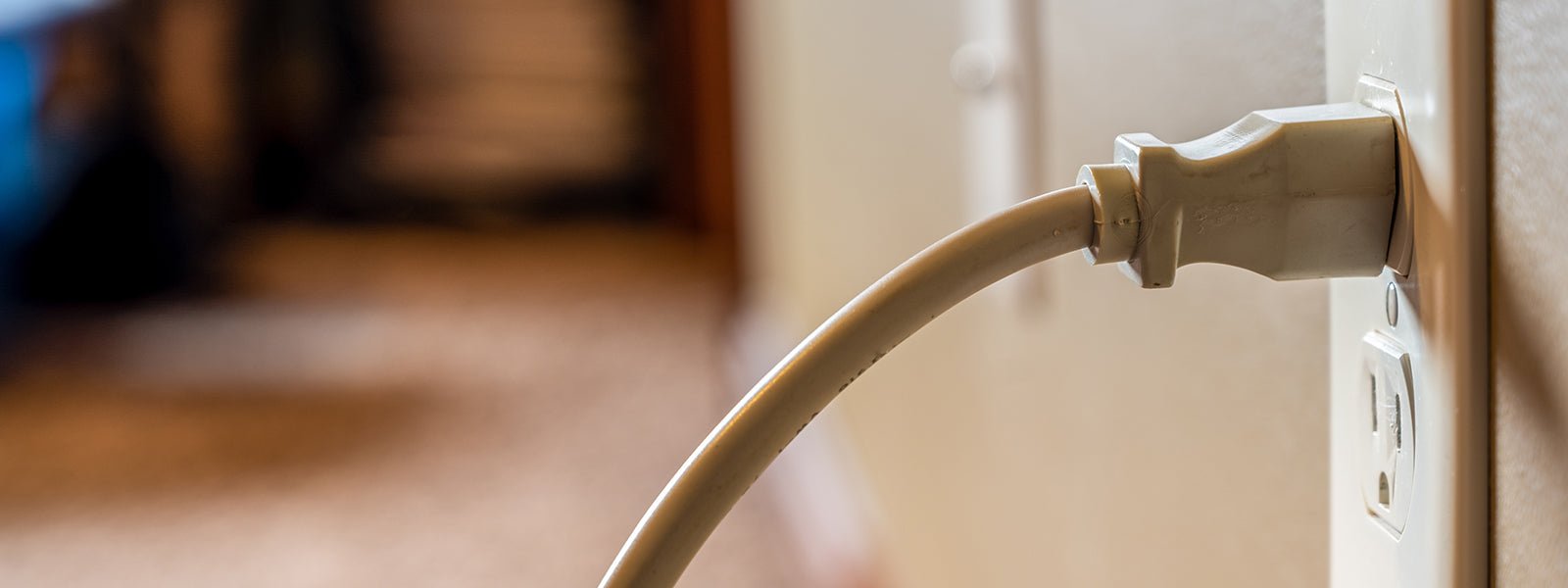Most of us know what frequency is; the high or low tones of sound. But some have asked what frequency response is and how it relates to transformers.
What does it mean?
Frequency response is a graph of voltage gain or loss versus frequency. As an audio product reaches its limits in the frequency range it may have a voltage gain or loss. The frequency limits and the gain or loss is the frequency response.
Most specs give a low and high frequency and the gain or loss that can be expected at those limits. These specs typically look like:
50-20K Hz. at +/-1dB
Let's break down the specs. The "50" is the low end of the frequency spectrum that the unit is rated at. The "20K" (20,000) is the high end of the frequency spectrum that the unit is rated at. "Hz" is the abbreviation for hertz, the unit of frequency.

Some specs have "-", "+" or "+/-", this is the loss (-) or gain (+) that the unit has at the listed frequency. The "1dB" is the amount of gain or loss, also know as amplitude. If the unit has. "+/-" means that there may be a gain or loss at the end frequency range

As a signal reaches one of the end frequencies, the signal strength will start to change. Ideally the unit will start to roll off or have a voltage loss. This is especially good on the high frequency end. By rolling, off the gain drops and filters out high frequency that is unwanted and unneeded. High frequency can cause oscillations in the system that you may not be able to hear. The rolling off of the low end is most of a concern now days with the desire of the low booms in today’s music. Most people can hear between 20 Hz. and 20,000 Hz. The reason the loss or gain in voltage has many factors is based on the design, manufacturing and material that is used.
Testing:
Testing a unit for frequency response varies on the type of product, but the basics are all the same. I will use the testing of an audio matching transformer with a 1 to 1 ratio as a sample. This will make it a bit easier to understand. First, we have to decide on the voltage of the signal we will be using. Lets say the transformer takes about a 1 volt input, about line level. Most rating are normalized at 1K Hz. This means that at 1K Hz. is the 0 dB mark or reference point to measure the gain or loss.
Once the normalization is done, you start at the lowest frequency. You will notice that the signal will have a loss from the 0 dB. This is normal. As you slowly increase the frequency the gain will increase. When it reaches about -1dB you mark the frequency down. This is your low end. As you increase the frequency the signal to 1K Hz. it will be at 0 dB. As you continue to increase the frequency it stay pretty much flat until you gets to about 18,000 Hz. and signal amplitude starts to drop. At 20,000 Hz. it drops to -1dB. The frequency response of this matching transformer could be rated at 50-20k Hz, -1dB.
What frequency response do I want?
This is a tricky question. First what is the audio system being used for? If you are looking for a public address or paging system then the frequency response is not a major factor. Human speech is typically around 300 to 5,000 Hz, so you do not need a system that goes up to 20,000 Hz or down to 30 Hz.
For background music, the frequency response is a little more important. Background music is in an environment that you want a soft and relaxing sound. The music is played to break the silence of a waiting room, office, store etc. and to relax. Because of this the frequency response is not a major importance. The typical frequency response is about 100-15K Hz, +/-2dB.
For the home entertainment system, frequency response is a major factor. From the earth shattering explosions in the latest movie to the low base in modern music to the high pitch of the violin in that classical music. Typical high end audio systems run about 30 to 20k Hz. Anything greater, in my opinion, is overkill and just another selling pitch. Over the years I have seen more and more people installing higher end audio systems for background music in stores. Most of this is due to the mood music used for selling. EDCOR was approached by NASCAR to supply transformers for you race tracks. They found that lower note caused an up sell in beer sells.
Now how does all this pertain to transformers and there design?
Well for power transformers, frequency response does not really mean anything. A power transformer is only needed to be rated for one certain frequency. 60 Hz for the US and 50 Hz for most of the world. When design a power transformer you design it for 50 Hz.. That way it will work fine at 60 Hz.
For audio transformers frequency response is a big deal. Think about the frequency response of whole sound system is. If you have a speaker that only goes down to 50 Hz. with a -1 dB, an audio transformer that goes do to 60 Hz., then do you need an amplifier that can go down to 30 Hz. When designing a sound system or adding on to one you have to keep in mind that a chain is only as good as its weakest link. We try very hard to make sure that our audio transformers are not a week link the a design.
The core of an audio transformer is a major factor in the saturation of a transformer. They core size and material effects the low end frequency.
The winding of a transformer has a lot of effect to the high end frequency. The more coupling of the primary and secondary the more high frequency will pass through a transformer.




